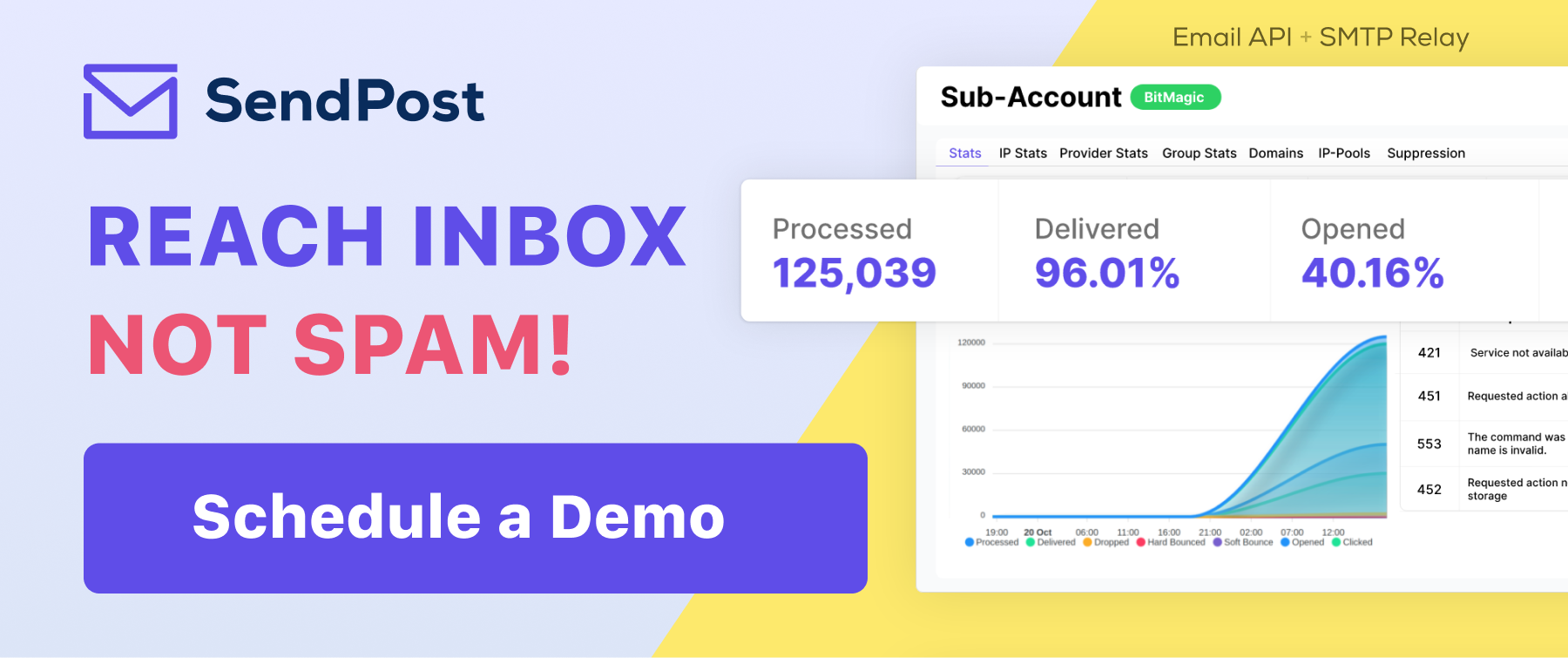If you're sending high volumes of emails, you know the struggle of having them end up in the spam folder. It's frustrating, to say the least. All that time and effort put into crafting the perfect email, only for it to disappear into the depths of the spam folder.
Not only does it decrease engagement, but it can also mean lost revenue for your business. Although there is no single magic bullet cure for this problem, there are a set of practices you can follow to make sure spam filters see your emails as legit and not coming from some "Nigerian prince."
But, before we dive into the strategies and best practices for avoiding spam filters, let's take a step back and understand the problem at hand. By doing so, we can better appreciate the solution and the benefits that come with it
The Spam Filter Algorithm
A spam filter algorithm is a computer program that automatically identifies and classifies emails as spam or not spam. It uses various techniques, such as machine learning, statistical analysis, and pattern recognition, to determine whether an email is likely to be unwanted or unsolicited.
Spam filter algorithms consider various factors when making their determinations, including the content of the email, the sending domain, the IP address of the sender, the presence of specific words or phrases commonly associated with spam, and the recipient's engagement history with the sender.
The goal of a spam filter algorithm is to provide a high level of accuracy in detecting and blocking unwanted email, while minimizing the number of legitimate emails that are mistakenly marked as spam.
It's important to note that different email service providers use different spam filter algorithms, so what might be marked as spam by one provider might not be marked as spam by another. Additionally, spam filter algorithms are constantly evolving to stay ahead of the latest spamming tactics.
How to Avoid Spam Filters

Check Your Email Content
The content of your emails is one of the most important factors that spam filters consider when determining whether an email is spam or not. Some tips for avoiding common content-related triggers include:
- Avoid using certain trigger words and phrases that are commonly associated with spam, such as "earn money fast" or "limited time only."
- Avoid using all capital letters, excessive punctuation, or excessive exclamation points.
- Include a clear and concise subject line that accurately reflects the content of the email.
- Ensure that your email is not primarily made up of images or links. Use a balanced ratio of text to images in your emails.
- Don't use misleading language in your content.

Maintain a Good Sender Reputation
A good sender reputation can help you avoid spam filters and increase the deliverability of your emails. Here are some strategies for maintaining a good sender reputation:
- Use a reputable and established email service provider that has a good reputation for sending high-quality email.
- Maintain a clean and accurate email list. Regularly remove inactive subscribers or invalid email addresses to keep your list up to date.
- Warm up your sending IP by gradually increasing your sending volume over time.
- Authenticate your email with SPF, DKIM, and DMARC to establish your sending domain's reputation.

Focus on Recipient Engagement
- Segment your email list based on subscriber engagement, and send targeted email campaigns to different segments.
- Encourage subscribers to add your email address to their contacts or safe senders list.
- Provide a clear and easy opt-out process for subscribers who no longer wish to receive your emails.
- Test your emails before sending them to a small segment of your list to gauge their engagement.

Monitor the Delivery Rate
- Monitor your email delivery rate and adjust your sending frequency as needed.
- Regularly test your emails using different email clients, devices, and operating systems to identify and resolve any delivery issues.
By following these best practices, you can increase the chances of your emails landing in the inbox and avoid being marked as spam. However, it's important to keep in mind that spam filters are constantly evolving, and what may work today may not work tomorrow. Regularly monitoring your email deliverability and making adjustments as needed will help you stay ahead of the curve.
Can an ESP Help You Avoid Spam Filters?
An email service provider (ESP) like SendPost can help you avoid spam filters. We have built-in systems and best practices in place to help ensure that your emails are delivered to the inbox.
There is also a robust monitoring and reporting tool that can help you monitor your email deliverability and make adjustments as needed. We also provide technical support and guidance to help you avoid common email deliverability issues and ensure that your emails are delivered to the inbox. Sign up here for free or schedule a demo to try for your next campaign
